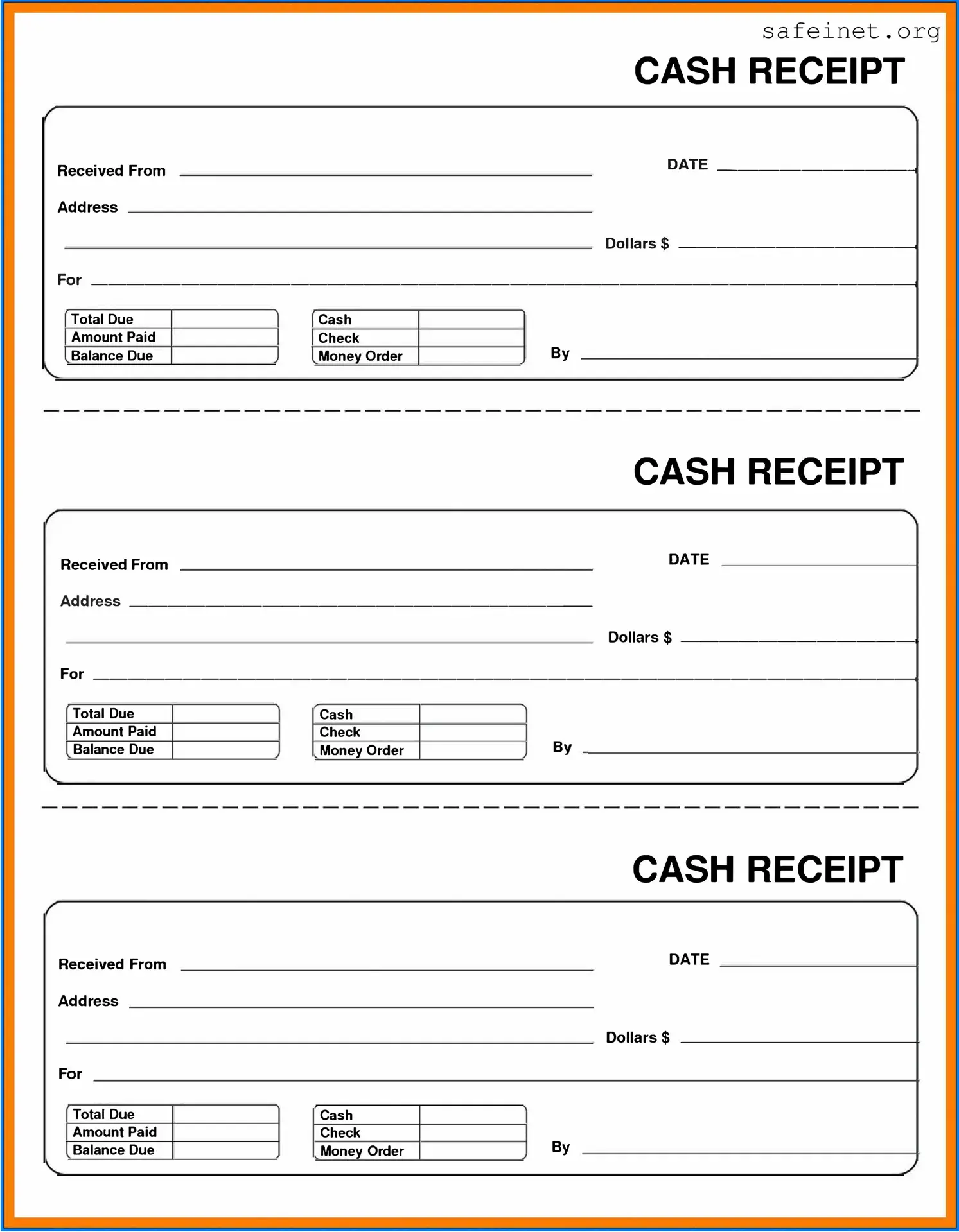The Invoice serves as a formal request for payment. It details the goods or services rendered, including the amounts due and payment terms. Like the Cash Receipt, it provides essential transaction information and can be used for record-keeping purposes. However, an invoice is typically sent before payment is made, whereas a Cash Receipt is issued once payment has been received.
A Sales Receipt is similar in that it confirms a transaction between a buyer and a seller. This document typically includes a breakdown of items purchased, the total cost, and the payment method used. Like the Cash Receipt, a Sales Receipt is evidence of payment but is often used in retail scenarios where payment occurs immediately upon purchase.
The Payment Voucher is a document that authorizes a payment to be made, often used in business accounts. It outlines the amount, recipient, and purpose of the payment. While it functions as a record of authorization, the Cash Receipt serves as proof that payment was indeed executed, capturing the actual transaction details.
The Bank Deposit Slip is utilized to record funds being deposited into a bank account. It provides details about the amount being deposited and the source of funds. Similar to the Cash Receipt, it acts as documentation of a transaction; however, it focuses on the transfer of cash to a bank rather than a sale or service rendered.
The Credit Note issues a correction for previously billed items, often when a return or discount is applied. It shows that a deduction has been made from the total amount owed. While it may not be a direct indication of a completed transaction like the Cash Receipt, it modifies the financial records of a transaction that may have needed adjustment.
An Expense Report is used to track and report expenses incurred, often by employees. It provides a detailed account of expenditures and supports reimbursement requests. Similar to a Cash Receipt, it serves to substantiate financial transactions. However, the focus is on reporting spending rather than confirming receipt of payment.
A Purchase Order is issued to initiate a purchase and confirms the buyer's intent to purchase goods or services. It contains quantities and pricing information. Like the Cash Receipt, it serves a vital role in record-keeping and financial tracking but is generated before the transaction occurs rather than afterward.
Finally, the Receipt Acknowledgment is a document that allows the recipient to confirm receipt of goods or services. It provides a record of what has been received and can serve as evidence of delivery. While similar to the Cash Receipt in confirming a transaction, it emphasizes the receipt of physical items rather than the payment made for them.

